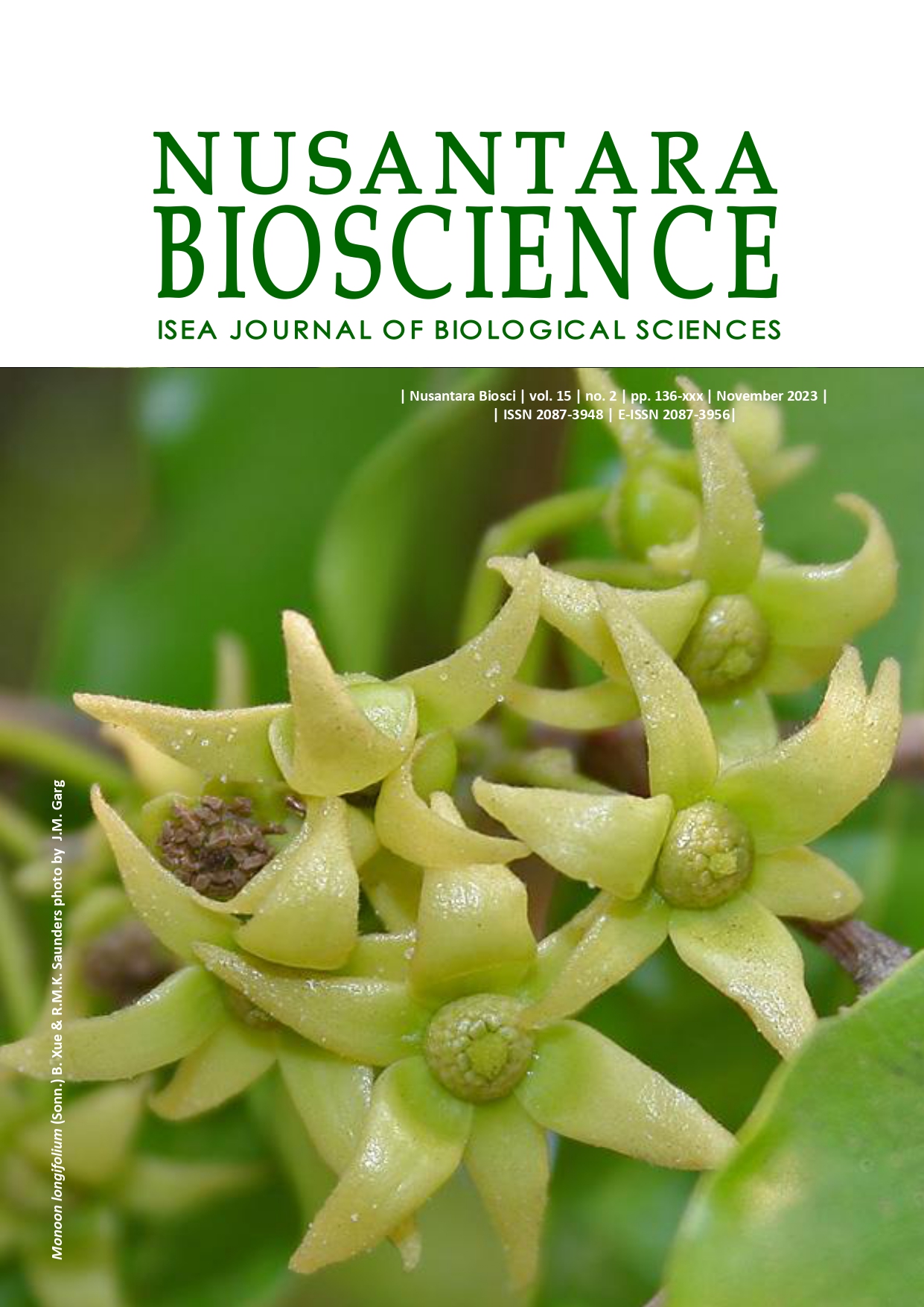Morphometric variations of Kawakawa (Euthynnus affinis Cantor, 1849) in Malaysian and Yemeni waters
##plugins.themes.bootstrap3.article.main##
Abstract
Abstract. Binashikhbubkr K, Setyawan AD, Naim DM. 2023. Morphometric variations of Kawakawa (Euthynnus affinis Cantor, 1849) in Malaysian and Yemeni waters. Nusantara Bioscience 15: 269-278. Euthynnus affinis Cantor, 1849 (Kawakawa), a small epipelagic tuna that migrates, is one of the most commercially significant tunas in Indo-Pacific subtropical and tropical waters. Unfortunately, there is a lack of knowledge on the region's stock structure and management of the particular migratory species. The present investigation aimed to distinguish body shape differences among 20 populations of E. affinis across Malaysian and Yemen coastal waters. A total of 416 specimens of E. affinis were sampled from five central geographic regions: the South China Sea, Straits of Malacca, Sulu Sea, Celebes Sea, and the Arabian Sea. Multivariate analyses, such as Principal Component Analysis (PCA), Discriminant Function Analysis (DFA), and Cluster Analysis (CA) of 12 morphometric variables, were conducted to differentiate 20 populations of E. affinis. The findings revealed significant differences in the body form among 20 populations. Morphological homogeneity was observed among populations from Peninsular Malaysia and Malaysian Borneo (Sabah and Sarawak). As expected, Yemen's (Mukalla City) populations were clearly segregated and formed a separate cluster. The highest percentage of correctly classified specimens (100%) came from populations in Pulau Tenggol (Terengganu) and Kukup (Johor). In contrast, the highest percentage of misclassified specimens (100%) came from populations in Kota Kinabalu (Sabah), Bintawa (Sarawak), Lumut (Perak), and Endau (Johor). Based on the Mahalanobis distances, hierarchical cluster analyses revealed that 20 populations of E. affinis could be clustered into three distinct groups. This is the first report on E. affinis from Peninsular Malaysia, Malaysian Borneo (Sabah and Sarawak), and the waters of Yemen using morphometric techniques.
2019-01-01

